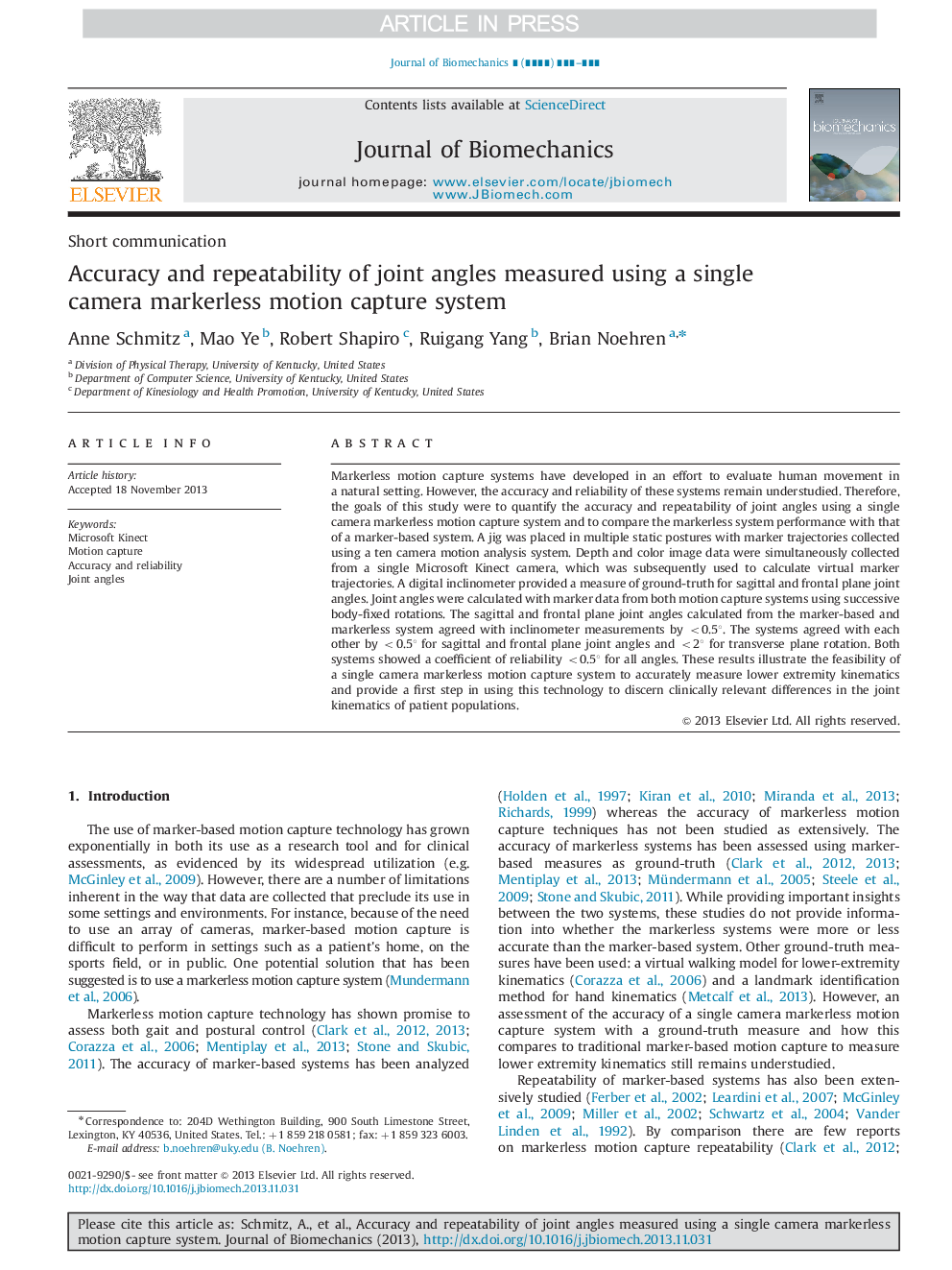| Article ID | Journal | Published Year | Pages | File Type |
|---|---|---|---|---|
| 10431575 | Journal of Biomechanics | 2014 | 5 Pages |
Abstract
Markerless motion capture systems have developed in an effort to evaluate human movement in a natural setting. However, the accuracy and reliability of these systems remain understudied. Therefore, the goals of this study were to quantify the accuracy and repeatability of joint angles using a single camera markerless motion capture system and to compare the markerless system performance with that of a marker-based system. A jig was placed in multiple static postures with marker trajectories collected using a ten camera motion analysis system. Depth and color image data were simultaneously collected from a single Microsoft Kinect camera, which was subsequently used to calculate virtual marker trajectories. A digital inclinometer provided a measure of ground-truth for sagittal and frontal plane joint angles. Joint angles were calculated with marker data from both motion capture systems using successive body-fixed rotations. The sagittal and frontal plane joint angles calculated from the marker-based and markerless system agreed with inclinometer measurements by <0.5°. The systems agreed with each other by <0.5° for sagittal and frontal plane joint angles and <2° for transverse plane rotation. Both systems showed a coefficient of reliability <0.5° for all angles. These results illustrate the feasibility of a single camera markerless motion capture system to accurately measure lower extremity kinematics and provide a first step in using this technology to discern clinically relevant differences in the joint kinematics of patient populations.
Related Topics
Physical Sciences and Engineering
Engineering
Biomedical Engineering
Authors
Anne Schmitz, Mao Ye, Robert Shapiro, Ruigang Yang, Brian Noehren,
